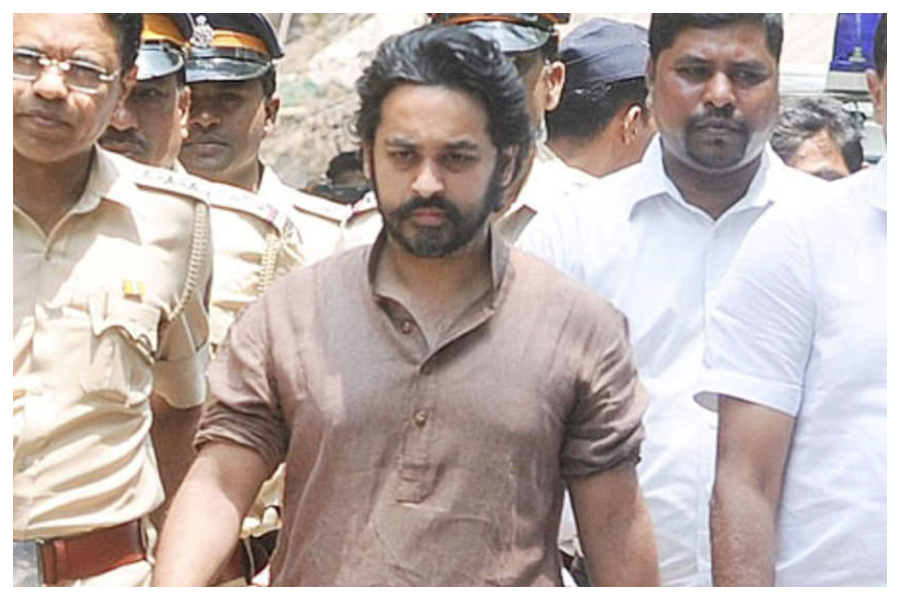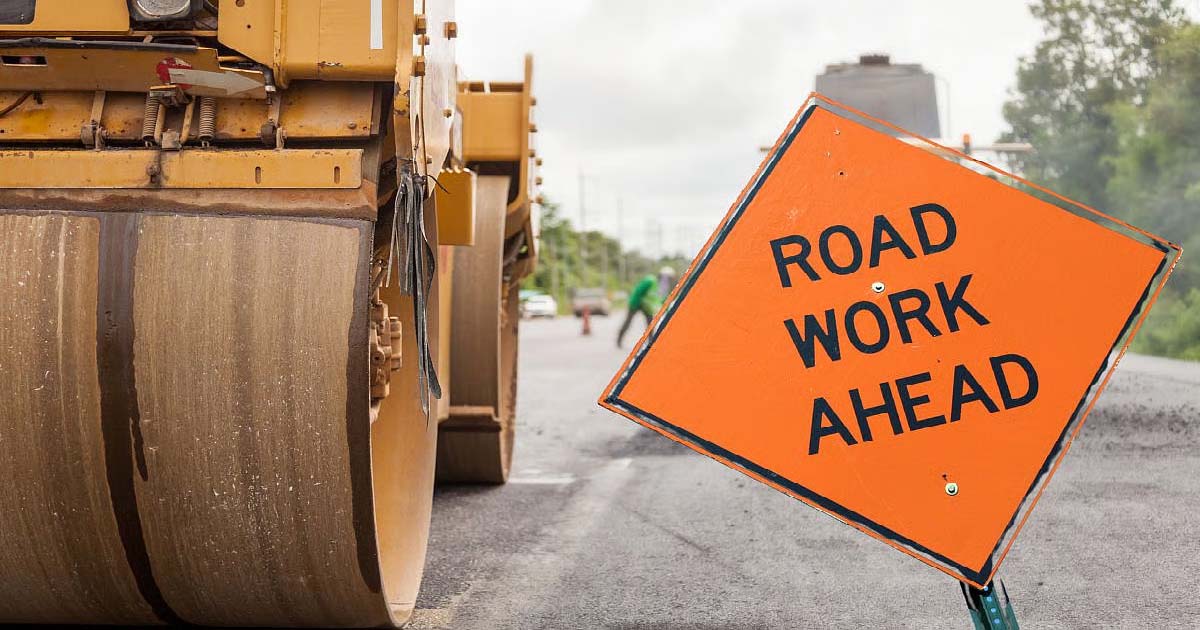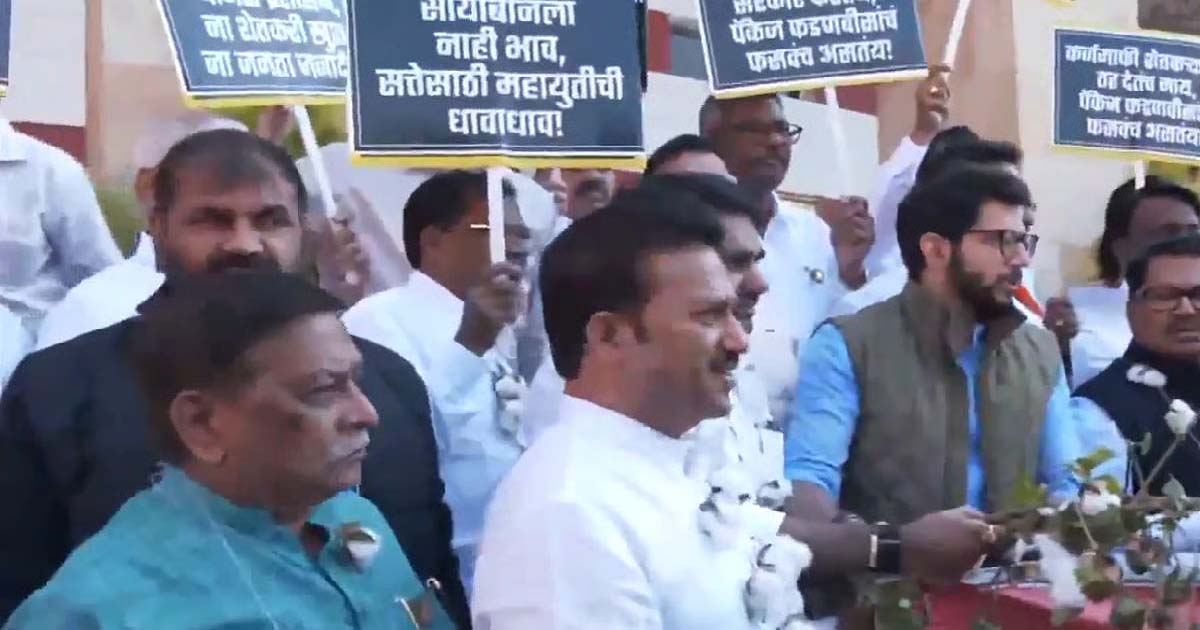Maharashtra
Ex-MP Nilesh Rane booked for ‘misbehaving’ with Maha cops

The Maharashtra Police have booked former MP Nilesh Rane, the son of Union MSME Minister Narayan Rane, for alleged ‘misbehaviour’ with the police a day before in the Sindhudurg Court premises, officials said here on Wednesday.
Among other things, he and at least four others have been slapped with charges for arguing with the police, illegal gathering in the court precincts, violating prohibitory orders, and disturbing peace in a public place.
The Sindhudurgnagari Police Station at Orose late on Tuesday booked Rane and others hours after they reached the court with many supporters when the Sindhudurg Court Additional Sessions Judge R.B. Rote was hearing the bail application of Bharatiya Janata Party MLA Nitesh Rane in an attempt to murder case.
The police had reached the court in riot gear and managed to evacuate scores of supporters of the Rane siblings after the court rejected Nitesh Rane’s regular bail plea.
Shiv Sena MLA from Kudal-Malvan constituency, Vaibhav Naik also shot off a letter to the District Superintendent of Police saying Nilesh Rane and over two dozen of his supporters had gathered at the courtroom around 3 p.m. Tuesday.
Contending that they had prevented public servants from doing their duty and abused the police, a probe should be conducted and action must be taken against the accused.
Maharashtra
Thane Traffic Update: Road Diversions Announced Between Kalyan-Dombivli Till December 21 For Water Supply Work | Know Alternate Routes

Thane: The Thane Police has announced major traffic diversions in parts of Kalyan-Dombivli due to water pipeline work at Dombivali East’s Kolegaon area. According to the official notification by the Thane Police, due to the ongoing work to replace the main water pipeline under the 12th water supply scheme at Kolegaon, traffic on the Kolegaon Square–Premier Ground–Kalyan Shil Road route will be affected till December 21.
The traffic diversions will be effective from 12 am on December 9 until 1 am on December 21.
All types of vehicles coming from Kolegaon Chowk towards Premier Maidan, Kalyan Shil Gate will be ‘closed’ at Dombivli East’s Kolegaon Chowk. Alternate Route The said vehicles will travel along the Badlapur Pipe Line to Rohane Katai Badlapur Chowk and from there onwards to the desired destination.
– Entry for all types of vehicles from Kolegaon to Kolegaon Chowk will be closed in front of the Shiv Sena branch in Kolegaon. Alternative route The said vehicles will proceed from near Premier Maidan to the Hanhat location via Kanyat Shik Road.
Meanwhile, a 15-hour water supply cut was announced today, December 9, due to maintenance work on the water supply network. The water supply is scheduled to remain shut from 9 am to midnight today, and several areas of Dombivali West and East are said to be affected.
The maintenance work scheduled today involves replacing the filter bed outlet pipeline at the Netivli Water Purification Centre and conducting repairs on the water distribution system in the Dombivli division.
Maharashtra
Maharashtra: Opposition Leaders Stage Protest Against State Govt’s Continued Neglect Of Farmers

Nagpur: The second day of the Maharashtra Legislature’s Winter Session on Tuesday saw the opposition staging a forceful protest over what they termed the state government’s “continued neglect” of farmers.
Accusing the MahaYuti government of apathy, opposition leaders said that despite repeated assurances, the situation on the ground has worsened, with farmer suicides reportedly averaging eight per day.
Leaders, including Vijay Wadettiwar and Aaditya Thackeray, said the government had “misled” farmers with promises of a comprehensive loan waiver that remains unimplemented.
They also criticised the administration for failing to ensure a fair Minimum Support Price (MSP) for key crops.
The opposition further alleged that the government’s decision to reduce import duty on cotton to zero has triggered a surge in foreign cotton imports, severely hurting domestic growers.
They said soybean procurement centres are yet to start operations this season, adding to farmers’ distress. They also hit out at the government for the delay in disbursing bonus payments for paddy.
Soybean farmers have said that they are compelled to sell their produce in the open market below the MSP level, which hardly covers their costs. This, they say, has deepened their financial crisis in rural households.
Raising slogans such as “Deceitful Government!”, “Waive Farmers’ Loans!” and “Ensure Fair Prices for Cotton and Soybean!”, opposition MLAs accused the government of making announcements without delivering meaningful relief.
They also pointed to rising cases of farmer suicides to argue that the administration lacks seriousness in addressing agrarian distress.
The opposition claimed the government’s lack of urgency became evident when the Union Agriculture Minister recently stated that the Centre had not yet received any proposal for aid for rain- and flood-hit farmers from the state.
The state government later clarified that it had submitted the proposal on November 27.
Maharashtra
Sakri Holi riots: Dhule sessions court acquits ten Muslims including two women in the case, Jamiat Ulema Maharashtra takes legal action against Arshad Madani

Dhule Sessions Court Additional Sessions Judge Jayshree R. Platte acquitted ten accused, including two women, in the Holi riot case that took place at a place called Sakri near Dhule recently due to the complainant and other government witnesses’ deviation from their previous statements. The court acquitted accused Sumiya Zakir Sheikh, Shabana Farooq Sheikh, Meraj Ibrahim Syed, Nasir Sapro Sheikh, Irfan Sapro Sheikh, Mohiuddin Sheikh, Nisar Naseeb Khan Pathan, Samad Saleem Sheikh, Zakir Sapro Sheikh and Saleem Sheikh of serious charges like attempt to murder. The case of the accused was pursued by the Jamiat Ulema Maharashtra (Arshad Madani) Legal Aid Committee on the request of Jamiat Ulema Dhule. Advocate Ashfaq Sheikh appeared in defense of the accused while Advocate NB Kalal followed the prosecution. On March 18, 2022, communal riots broke out in Sakri on the occasion of Holi, after which the police took unilateral action and registered a case against ten Muslims, including two women, under sections 147, 148, 307, 353, 332, 336, 337, 295 of the Indian Penal Code. The police applied Section 4/25 of the Arms Act on the accused and accused them of assault with weapons. Initially, the case was heard in the Sakri Magistrate Court and then the case was transferred to the Dhule Sessions Court because the police had also applied serious sections like 307/ along with the Arms Act on the accused. During the final hearing, Advocate Ashfaq Sheikh told the court that during the trial, the complainant and his wife did not support the police and deviated from their previous statements. Therefore, the accused should be acquitted from the case.
Additional Sessions Judge Jayshree R. Plate of the Dhule Sessions Court said in his decision that the accused cannot be punished on the basis of deviation from the statements of important witnesses and mere suspicion, therefore all the accused are acquitted from the case. On the instructions of President Jamiat Ulema Maharashtra Maulana Haleemullah Qasmi, Mushtaq Sufi (General Secretary, Dhule District) and his colleagues prosecuted the case.
-

 Crime3 years ago
Crime3 years agoClass 10 student jumps to death in Jaipur
-

 Maharashtra1 year ago
Maharashtra1 year agoMumbai Local Train Update: Central Railway’s New Timetable Comes Into Effect; Check Full List Of Revised Timings & Stations
-

 Maharashtra1 year ago
Maharashtra1 year agoMumbai To Go Toll-Free Tonight! Maharashtra Govt Announces Complete Toll Waiver For Light Motor Vehicles At All 5 Entry Points Of City
-

 Maharashtra1 year ago
Maharashtra1 year agoFalse photo of Imtiaz Jaleel’s rally, exposing the fooling conspiracy
-

 National News1 year ago
National News1 year agoMinistry of Railways rolls out Special Drive 4.0 with focus on digitisation, cleanliness, inclusiveness and grievance redressal
-

 Maharashtra1 year ago
Maharashtra1 year agoMaharashtra Elections 2024: Mumbai Metro & BEST Services Extended Till Midnight On Voting Day
-

 National News1 year ago
National News1 year agoJ&K: 4 Jawans Killed, 28 Injured After Bus Carrying BSF Personnel For Poll Duty Falls Into Gorge In Budgam; Terrifying Visuals Surface
-

 Crime1 year ago
Crime1 year agoBaba Siddique Murder: Mumbai Police Unable To Get Lawrence Bishnoi Custody Due To Home Ministry Order, Says Report












